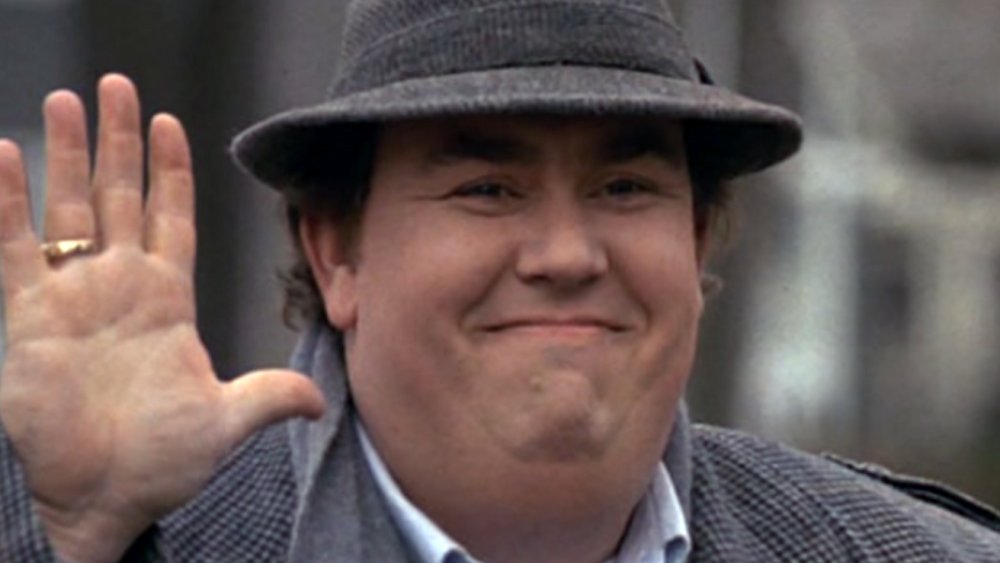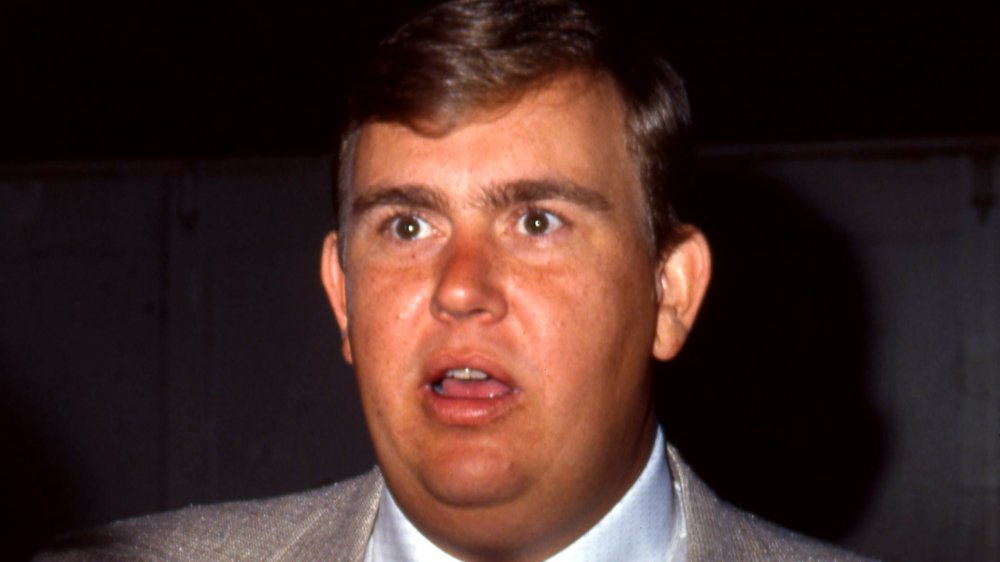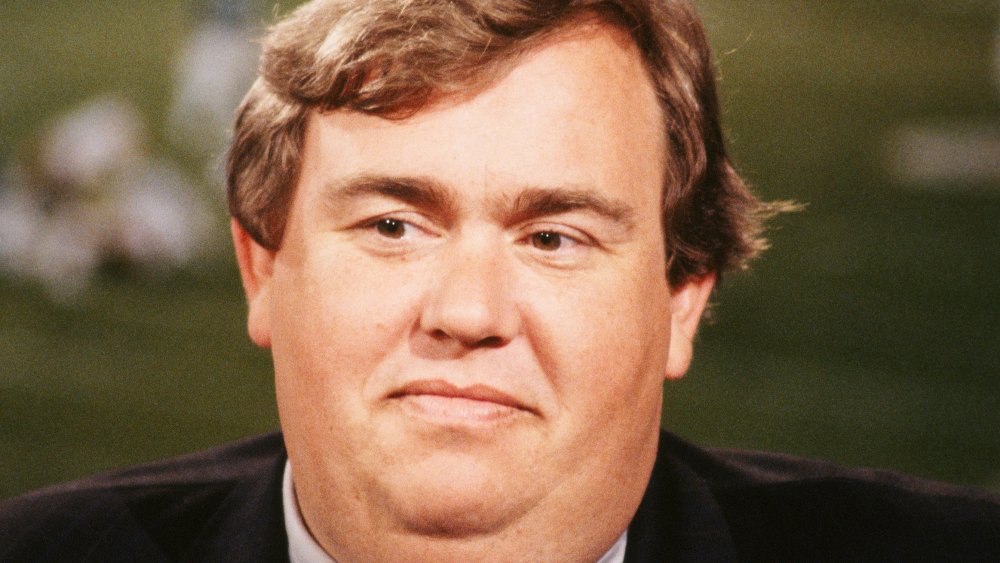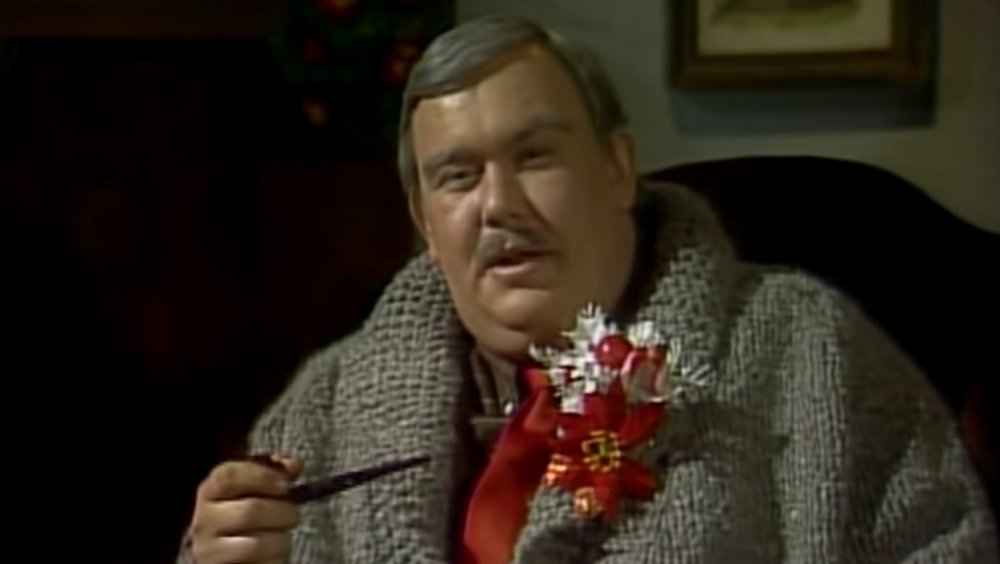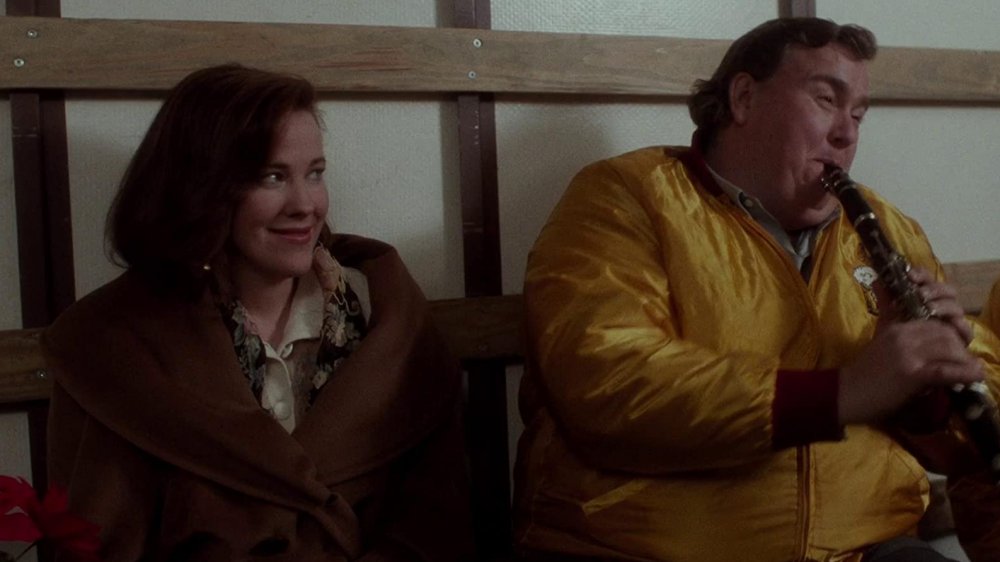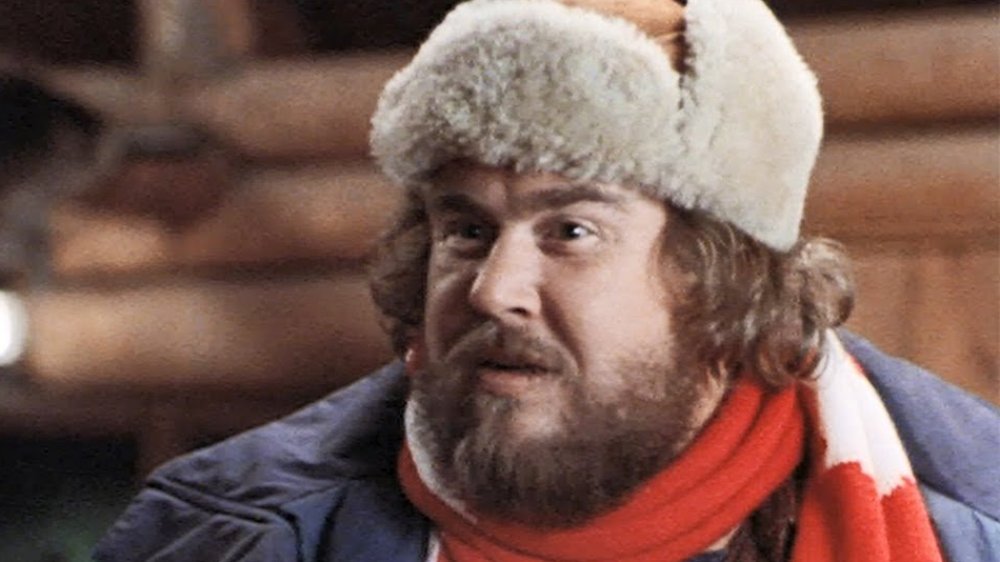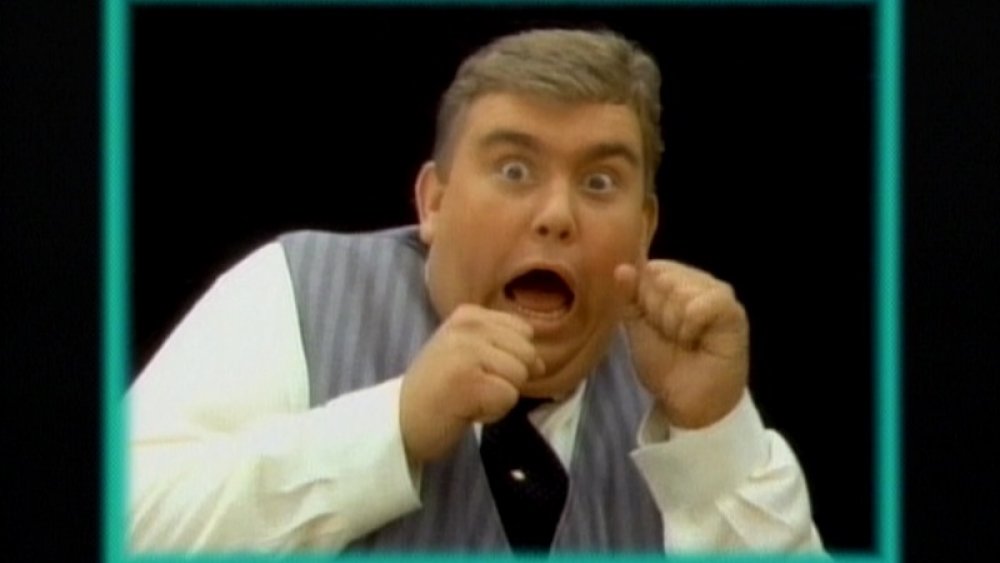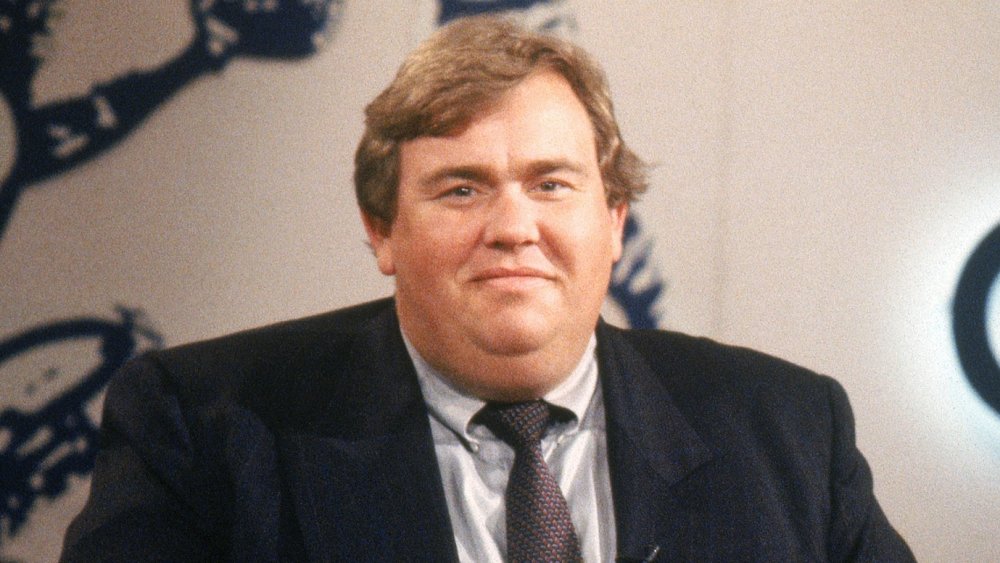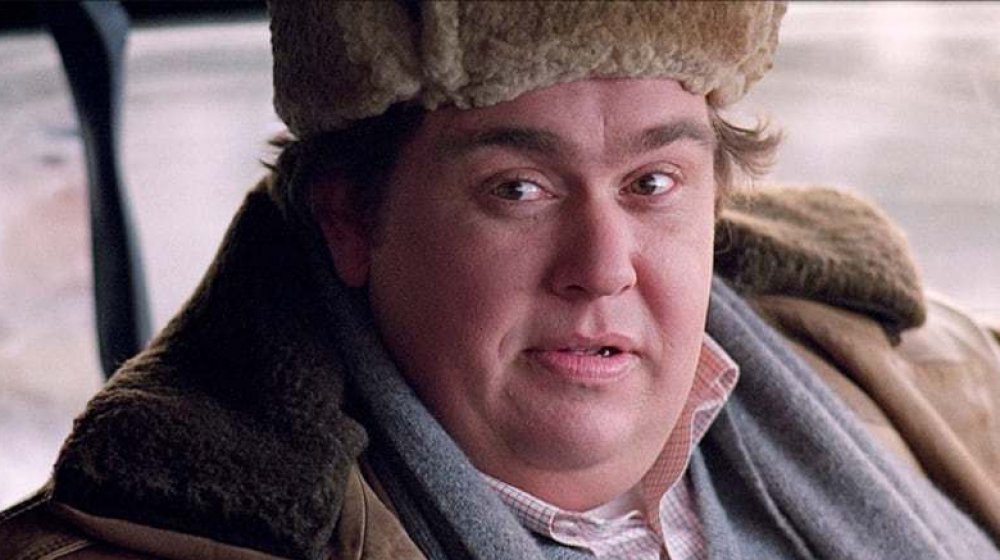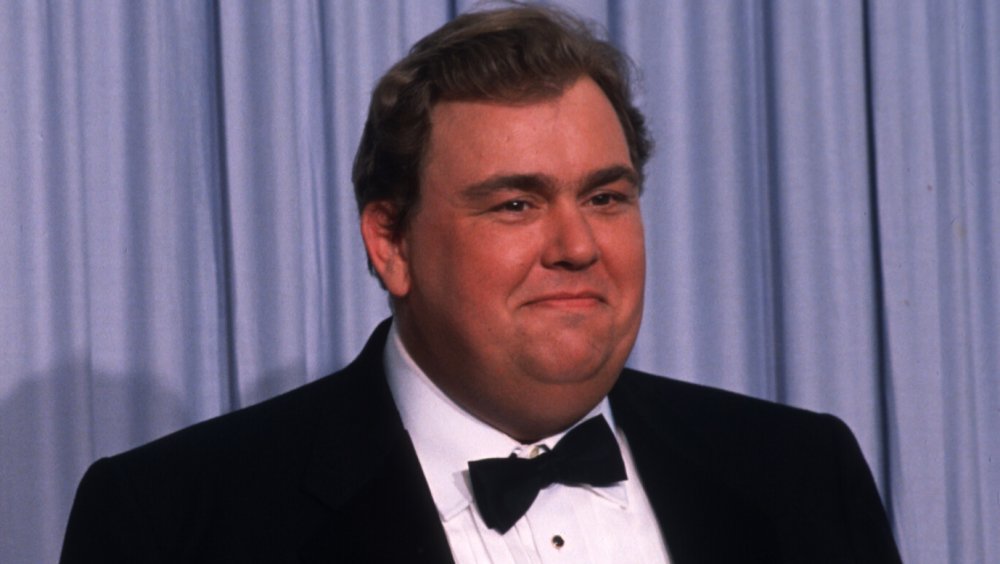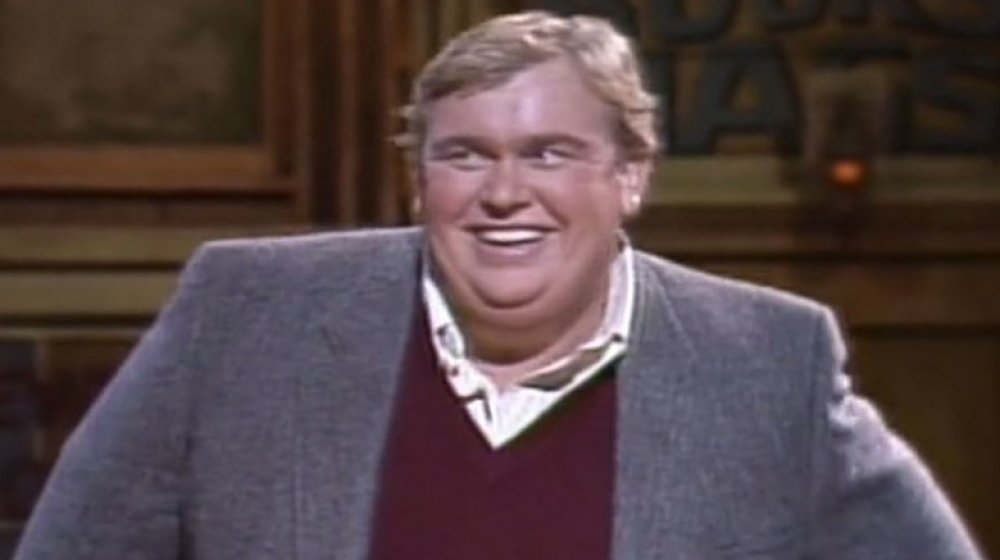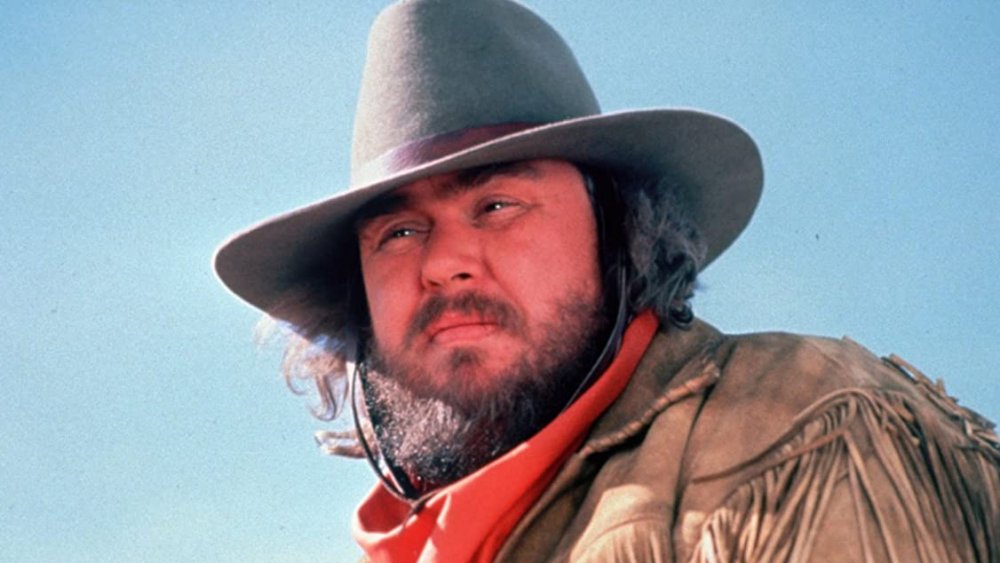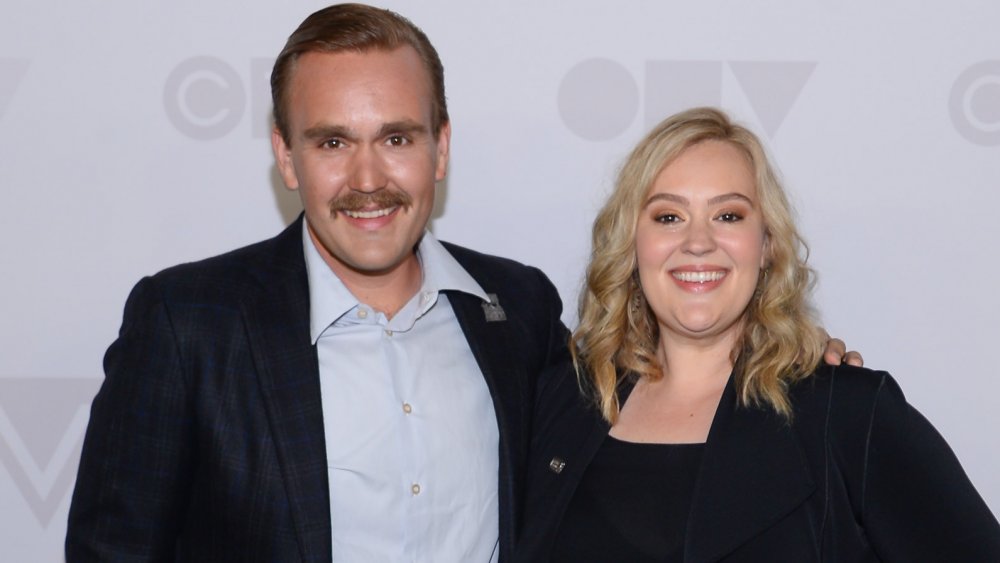The Tragic Real-Life Story Of John Candy
There's a solid argument that the 1980s were the best decade ever for mainstream comedy movies. Well-written, hilariously acted, funny films with wide appeal dominated the box office (and then-new venues like home video and HBO) thanks to stars like Steve Martin, Bill Murray, Dan Aykroyd, and Chevy Chase. But there's one actor who starred alongside all those icons and left an indelible imprint on screen comedy: John Candy. Through the decade he was a welcoming presence in one classic comedy after another, including hits as iconic as The Blues Brothers, Stripes, Splash, Spaceballs, Summer Rental, Uncle Buck, The Great Outdoors, and Planes, Trains & Automobiles. John Candy specialized in playing goofballs and obnoxious guys, but his performances were never one-note, as the actor always let his character's heart and humanity shine through.
John Candy's time at the top didn't last all that long — he unexpectedly died in 1994. His surprisingly early death was one final tragedy in a life often overshadowed with struggle and sadness. Here's a look at the sometimes difficult and challenging life of John Candy.
John Candy lost his father at age 5
Tragedy struck John Candy at an early age, upending his young life and leaving behind a specter of sadness and loss. According to People, Candy was born in 1950 to middle-class parents Evangeline and Sidney Candy, who earned a living as car salesman in Toronto. When John Candy was just 4 years old, and his brother, Jim, was 6, Sidney Candy unexpectedly died from complications of heart disease. The Candy patriarch was only 35 years old.
Per Martin Knelman's Laughing on the Outside: The Life of John Candy, Evangeline Candy had little choice but to make the economical decision to move her family away. She took her two young kids to a very small bungalow in the working-class Toronto borough of East York, which they shared with John Candy's grandparents and aunt. The knowledge that his father died from a delicate heart stuck with Candy for his entire life. "It was always in the back of everybody's mind," Candy's brother-in-law, Frank Hober told People in 1994 of how Candy's extra weight and unhealthy habits could lead to the same fate that Sidney Candy had suffered. "No one talked about it, but it was in the back of John's mind, too." Unfortunately, John was unable to avoid the same fate.
Injuries derailed his plans to play in the Canadian Football League
Although he fully embraced comedy and acting, and he certainly gave it his all, going into the entertainment industry wasn't John Candy's first plan of action. He was initially an athlete, playing offensive tackle on his high school football team in the Toronto area, and according to The Hollywood Reporter, he harbored dreams of going pro some day. Any plans of playing in the Canadian Football League, such as for the local Toronto Argonauts, dissipated when a severe knee injury (per CTV News) prematurely ended his playing days. Candy turned his attentions to performing instead, and soon after as a young adult, he thrived in Canada's burgeoning comedy scene.
But he never entirely put football aside. Being a movie star afforded Candy the opportunity to become a part owner of a CFL team — and his favorite one at that, the Toronto Argonauts. In 1991 (alongside fellow internationally known Canadian celebrity Wayne Gretzky), Candy put up the money to purchase a 10% stake in the Argos. Later that year, the newly invigorated squad won the CFL's championship, the Grey Cup. Unfortunately, the Argonauts' other owners decided to sell the team in 1994, ending Candy's brief tenure as a CFL big shot.
John Candy got his big break on SCTV
The Second City comedy troupe, with branches in Chicago and Toronto, proved so successful and popular that in 1976, the Canadian wing took its act to Ontario's Global Television Network. The theatrical cast that came along for SCTV is legendary, and it included Harold Ramis, Joe Flaherty, Eugene Levy, Catherine O'Hara, Dave Thomas, and John Candy. It aired irregularly and primarily in Canada (and in syndication) until 1980, at which point Candy left, only to return after the show was picked up in 1981 by U.S.-based NBC to air after Saturday Night Live. The exposure made stars out of most of SCTV's players, particularly John Candy. Portraying broad and memorable characters in films seemed like a foregone conclusion for the star, who created so many for SCTV's various iterations, including TV personality Johnny La Rue, a dark version of Beaver Cleaver from Leave it to Beaver, Julia Child (who boxes Mr. Rogers), Japanese movie monster Grogan, and the self-explanatory Harry, the Guy With a Snake on His Face.
John Candy played favorites
Like the "Brat Pack" of teen actors (Molly Ringwald, Anthony Michael Hall, Andrew McCarthy) who frequently worked together in '80s teen movies, or the Will Ferrell / Vince Vaughn / Owen Wilson "Frat Pack" of millennium-era comedy collaborators, funny films of the 1980s were dominated by a loose, unnamed, but obviously connected handful of actors. Almost all of them had honed their skills and found fame via Saturday Night Live and the various SCTV series — they all worked together on TV, and they continued to work together out of comfort and a shared comedic language when they moved on to big-budget films.
John Candy was an important member of this club, and he stayed loyal to his comedy cronies throughout his career. For example, all of his screen time as a traveling polka musician in Home Alone is spent alongside SCTV co-star Catherine O'Hara, and he has a small role in Little Shop of Horrors, which featured SCTV's Rick Moranis, Stripes' Bill Murray, and Planes, Trains, and Autmobiles' Steve Martin. Candy also enjoyed a particularly special and fruitful relationship with filmmaker John Hughes. He starred in a number of projects that Hughes wrote and or directed, including Uncle Buck, Home Alone, Career Opportunities, The Great Outdoors, National Lampoon's Vacation, and Planes, Trains, and Automobiles. "He loved working with John Hughes," Candy's son, Chris Candy, told The Hollywood Reporter. "Those movies really resonated with him."
John Candy remained loyal to the Canadian film industry
Even though he found major success in the large, lucrative world of Hollywood filmmaking, John Candy never abandoned the much smaller and more modestly budgeted Canadian entertainment industry that had given him his big breaks. In the '80s and '90s, the A-list movie star concurrently dabbled in movies and TV shows with predominantly Canadian casts or which were not widely seen outside Canada. In 1981, Candy co-starred in Stripes, but also appeared in an episode of the Canadian Broadcasting Corporation's Tales of the Klondike. Two years later, he cameoed as a cheery security guard in Vacation but had a bigger role in Going Berserk, alongside SCTV pals Joe Flaherty and Eugene Levy. Candy had a big 1985, with roles in Summer Rental, Brewster's Millions, and the CBC mockumentary The Canadian Conspiracy. One of Candy's final films was the Canadian TV movie Hostage for a Day, which he also directed as it filmed in various Canadian locations, which according to IMDB, included sites in Newmarket, Richmond Hill, and Aurora, Ontario.
Candy also sent up his own pro-Canada sentiments. According to Rotten Tomatoes, one of John Candy's last completed movies was the satirical comedy Canadian Bacon, in which he was cleverly cast as a patriotic American sheriff who tries to lead an invasion of Canada.
John Candy lost out on his chance to be in Ghostbusters
While he did appear in some of the most important and enduring comedies of the 1980s — National Lampoon's Vacation, Stripes, The Blues Brothers — John Candy didn't make it into Ghostbusters, the highest-grossing comedy of the entire decade, according to AMC's Filmsite. It even starred a number of known Candy collaborators, including Stripes star Bill Murray, his friend Dan Aykroyd, and SCTV colleague Harold Ramis.
John Candy was actually supposed to be in the movie from the start, offered the role of lovelorn nerd (turned unwitting Keymaster vehicle) Louis Tully. Director Ivan Reitman reached out to Candy with a treatment (a detailed outline of the script). "He didn't like the treatment that I had sent. He didn't get it," Reitman told Entertainment Weekly (via JoBlo). "He said, 'Well, maybe if I played him as a German guy who had a bunch of German shepherd dogs.'" Reitman politely turned down Candy's suggestions, deeming the additions over the top and unnecessary, and so Candy bowed out of consideration. His SCTV castmate Rick Moranis got the role instead, although Candy did make a cameo in the star-studded music video for Ray Parker Jr.'s "Ghostbusters" theme song.
John Candy had addiction issues
John Candy's development as an actor in the 1970s, and his rise to stardom in the 1980s, ran concurrent with a growing problem with addictions. In 1971, at the suggestion of comedian friend Dan Aykroyd, Candy auditioned for the Second City comedy company. He made it in to the troupe (joining the likes of John Belushi, Gilda Radner, and Bill Murray), and "The next thing I knew," he told People, "I was in Chicago, where I learned how to drink, stay up real late, and spell 'd-r-u-g-s.'" However, according to the REELZ documentary Autopsy: John Candy (via Canoe), those habits matched Candy's already ingrained tendencies, as he'd smarted smoking as a teenager and by the time he was 18, he was up to a pack of cigarettes per day. Throughout his life, he never did give up smoking, and according to forensic pathologist Dr. Michael Hunter, Candy also dabbled in cocaine.
John Candy suffered from depression
One of John Candy's closest friends (and comedy idols) early in his career was John Belushi. Like Candy, Belushi worked out his chops at Second City, and collaborated with Dan Aykroyd, and all three starred together in The Blues Brothers and the war comedy 1941. Tragically, the hard-living John Belushi died of a drug overdose in March 1982, according to The Hollywood Reporter. Candy, who, like Belushi was both heavyset and engaged in some unhealthy habits of his own, took the death extremely hard.
Per Martin Knelman's Laughing on the Outside: The Life of John Candy, John Belushi's death was literally sobering. "He saw it as a message," said actor Dan Hennessey. "John knew it was time to go home, clean up, and get his career in order." Candy quit cocaine at that point, but the untimely demise of his friend also sent the actor into deep funk. Friend John Stocker reported that Candy was so upset in the immediate wake that he fell into a depressive state so bad that he wouldn't leave his home or answer the phone.
John Candy had a lot of health problems
Health was a consistent worry to John Candy and to those who loved the actor. His father had died from heart problems at the exceedingly young age of 35, leaving behind the possibility that Candy could similarly die from a similar condition, and too soon at that. The actor struggled with his weight throughout his adult life. People reported that he weighed usually hovered around 275 pounds, although he made great efforts to lose weight throughout his life via diets, exercise, and trainers, all of which he had a hard time sticking with.
After he turned 40, he self-medicated a sudden onset of panic attacks with overeating. His weight increased, particularly after he pulled out of hosting the 1992 Canadian Genie Awards because it promoted Candy's presence with the crude tag line, "We got the biggest star we could find." Before long, Candy's scale number was reportedly around 330 pounds. According to the TV documentary Autopsy: John Candy (via Canoe), Candy was also a regular smoker, which may have helped contribute to his declining health. Whether it was genetics, habits, or a combination of the two, Candy would ultimately go the way his father did and die of a fatal heart attack, per the New York Times.
"Live from New York," it's ... not John Candy
Getting asked to host an episode of Saturday Night Live is an honor for a performer and a milestone moment in any career. It was as true in the '80s and '90s as it is today, and NBC's late-night institution frequently invited on the biggest comedic names of the day, such as former cast members Chevy Chase and Bill Murray, as well as Steve Martin, Tom Hanks, Robin Williams, and Michael Keaton. But John Candy didn't show up as often as the others did. The man dominated comedy film of the '80s and '90s, and also had a TV sketch background with his work on SCTV, and yet he only hosted SNL one time, in October 1983.
The show often made plans for Candy to appear, but they kept falling through. In James Andrew Miller and Tom Shales' SNL oral history Live From New York, show writer Bob Odenkirk explained the host selection process. "Two weeks ahead of time they've got a pool of names, two or three people, and they ask these people to host the show," and offers are extended. "And then, as the week gets closer, [head producer] Lorne [Michaels] picks one of them. And what happens is the other two people get burned." Odenkirk claimed that according to show lore, Candy was the "most-burned potential host." Michaels would ask and then go with the other candidates, time and time again.
John Candy died on the set of his final film, Wagons East
According to The Independent, John Candy reported to the set of Wagons East near Durango, Mexico. The film was a 1994 Western comedy where he starred as James Harlow, a cowboy and wagon master hired to take a group of unhappy settlers away from the brutal frontier and back to their homes on the East Coast. A box office bomb and critical failure — it earned $4.4 million and a 0 percent rating on Rotten Tomatoes, respectively — Wagons East was an ignominious ending to the stellar career of John Candy, as it was the last movie he'd ever make.
On March 4, 1994, according to People, Candy shot his last scene for the movie and celebrated by cooking up a late-night dinner for his assistants. That night he also called costars Richard Lewis and Robert Picardo just to chat and also phoned his young children (per The Hollywood Reporter) back in Los Angeles to say goodnight. Then the actor headed to bed, but he never woke up. While he slept, he suffered a heart attack. John Candy was 43.
John Candy's kids followed him into show business
According to The Hollywood Reporter, John Candy met the woman who would become his wife, Rosemary, in the late 1970s. They were set up on a blind date and hit it off, then started to spend more time together when Candy asked her to help him type a script. She went on to become an abstract painter and ceramics artist and after marrying in 1979, the couple had two children, daughter Jennifer and son Chris. When their father died in 1994, Jennifer was 14 and her brother was 9.
Both Candy kids kept up their father's legacy in entertainment and went into television and film. Jennifer Candy appeared on episodes of Liv and Maddie and Sydney to the Max and produced the TV shows Prom Queen and Cockpit. Chris Candy has popped up on shows like Murder in the First and in a sketch on The Late Late Show with James Corden. Fittingly, both Candy kids got their start on a project of their father's, voicing characters on the Saturday morning cartoon Camp Candy.
